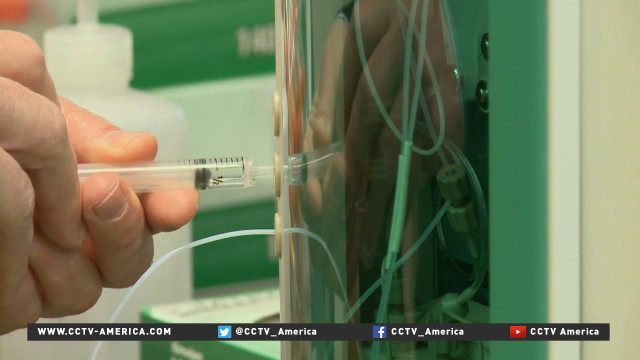Recent findings by the University of Washington show that warmer ocean water is melting crystallized methane and releasing it into the sediment and waters off the coast of Washington state, at levels that reach the same amount of methane from the Deepwater Horizon blowout — every year for the past 40 years.CCTV America’s Chris Casquejo reported the story from Seattle.
JUMP TO:
White House wants to cut methane emissions from oil and gas industries
Robert W. Howarth of Cornell Univ. discusses methane dangers
The methane is coming from a patch of ocean, about a third of a mile from the surface, the study found.
“Based on that temperature trend, we then did some sediment modeling. We used simulations to understand how that propagates into the sediments, and what response a gas hydrate reservoir — which is basically methane ice — would have to that change in temperature over the last 30 years,” Evan Solomon, University of Washington professor of geochemistry said.
The question is whether all that methane is reaching the atmosphere, helping raise the earth’s temperature. University of Washington researchers cannot say for sure.
“All we can say is that methane is released in the sediments, pretty shallow in the sediments, in response to that warming,” Solomon said.
A few months ago, researchers aboard a ship collected sediment samples from the ocean floor 48 kilometers (30 miles) off the coast of Washington state. They went to 10 different sites at depths of about 500 meters (1,640 feet), where researchers said the conditions were ripe for methane release. They’re now analyzing those samples to try and determine what impact methane is having on marine life.
They expect to have some answers in about four months. Researchers first became aware of the potential mass methane release after a fisherman sent them a picture of an underwater bubble plume five years ago.

If the methane is finding its way into the water, scientists warn of the potential for harm.
“When you release methane out of the sea floor, it oxidizes almost immediately to carbon dioxide,” Paul Johnson, University of Washington professor of oceanography said. “That makes seawater more acidic and more anoxic and that will contribute to fish kills.”
Researchers also believe these conditions for methane release are the same off the coasts of California, Oregon, and British Columbia, Canada.
White House wants to cut methane emissions from oil and gas industries
Environmental concerns are pushing the oil-and-gas industry to do its part to cut methane emissions. This month, the U.S. government announced a new goal on that front. CCTV America’s Ginger Vaughn reported this story from Houston.

The Eagle Ford Shale Basin is one of three U.S. shale oil fields leaking about 10 percent of the gas they produce, most of it methane. That’s more than three times what it should be to qualify as “green” energy.
“For the climate, you want to make absolutely certain that the leakage from everything – from the drilling to the actual combustion – doesn’t exceed three percent,” Russell Dickerson, atmospheric chemist for the University of Maryland said. “Otherwise, you might as well burn coal.”
The White House said in the next 10 years it wants to cut methane emissions by as much as 45 percent from their 2012 levels. Some U.S. drilling operations may have already reached that goal, or are getting close to it.
In 2014, slant drillers working Ohio’s Utica shale formation have cut methane emissions by 55 percent from their 2013 levels. The Andarko Basin drilling in Oklahoma and the Texas Panhandle cut emissions by 34 percent. Emissions from the Eagle Ford basin dropped 18 percent, according to the U.S. Environmental Protection Agency.
Dickerson questions that data, but believes the White House targets are realistic.
“These are engineering problems,” he said. “You have to have the political will and the wherewithal to do it, but these are solvable problems.”
The industry also wants to solve the problem, as leaking gas is lost money.
“We want to capture more of this methane, and to be able to bring it to market, to sell it to consumers to heat their homes and provide power facilities across the nation,” Carlton Carroll, spokesman for the American Petroleum Institute said. “But we also want to have a clean environmental record here. We have a strong incentive to clean up our environmental footprint.”
By some estimates, the break-even point for producing Eagle Ford shale oil is around $50 a barrel. This week, one of the world’s benchmarks, West Texas Intermediate oil, has been selling below $44 dollars and could fall even further.
Robert W. Howarth of Cornell Univ. discusses methane dangers
CCTV America interviewed Robert W. Howarth , professor of ecology and environmental biology at Cornell University, about the dangers that methane emissions pose to the planet.

 CGTN America
CGTN America
